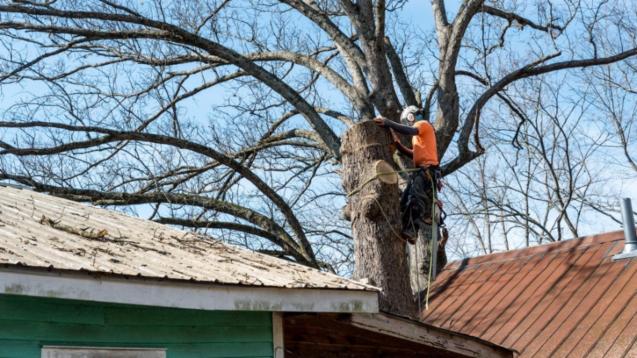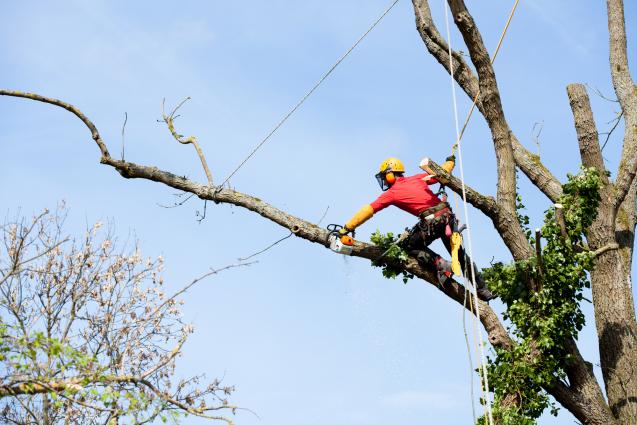
Urban Gardening: Effective Tree Management in Sydney’s Inner West
By Wolf Trees and Gardens|September 17, 2024
Urban gardening in Sydney's Inner West has become increasingly popular as residents seek to enhance their living spaces with green, sustainable elements. In urban ecosystems, the role of effective tree management cannot be overstated. Well-maintained trees offer numerous benefits, such as improving air quality, providing shade, and contributing to the overall aesthetic appeal of the neighbourhood. This article aims to highlight the vital aspects of tree management, covering topics such as climate and soil conditions, tree species selection, planting techniques, pruning, and managing tree diseases and pests.
Understanding the Climate and Soil Conditions in Sydney's Inner West
Sydney's Inner West experiences a temperate climate characterised by warm summers and mild winters. These conditions significantly influence tree growth, requiring careful consideration when selecting and maintaining trees. The annual rainfall in this region provides adequate moisture but also necessitates well-draining soils to prevent waterlogging.
The soil types commonly found in Sydney's Inner West range from sandy to clayey soils, each with its own set of challenges and advantages. Clayey soils, for instance, are nutrient-rich but can be prone to compaction, making it difficult for tree roots to penetrate. On the other hand, sandy soils offer good drainage but may require frequent fertilisation to maintain nutrient levels.
Preparing and maintaining soil is essential for promoting healthy tree growth. This includes regular testing to assess pH levels and nutrient content, as well as amending the soil with organic matter such as compost or well-rotted manure. Additionally, choosing climate-resilient tree species that can withstand the local weather conditions will ensure long-term success in urban gardening.
Selecting the Right Tree Species for Urban Gardening
Selecting appropriate tree species for urban environments involves several criteria, including size, growth rate, and adaptability to local conditions. It's essential to choose trees that won't outgrow their space or interfere with nearby infrastructure, such as power lines.
The debate between native and non-native tree species often surfaces in urban gardening discussions. Native species typically offer advantages such as increased resilience to local pests and diseases and better support for local wildlife. However, non-native species may be chosen for their ornamental value or specific functional benefits, like shade provision or pollution tolerance.
Popular tree species suited to Sydney's Inner West include the native Blueberry Ash (Elaeocarpus reticulatus) and the non-native Japanese Maple (Acer palmatum). These trees are well-regarded for their adaptability and aesthetic appeal. For those interested in finding suitable tree species, resources such as local nurseries and botanical gardens are valuable assets.
Planting Techniques for Optimal Tree Growth
Planting trees in an urban setting requires careful planning and execution to ensure their optimal growth. The following step-by-step guide outlines the process:
1. Site Selection: Choose a location that provides adequate space for the tree's mature size, taking into account proximity to buildings and underground utilities.
2. Soil Preparation: Amend the soil with organic matter to improve drainage and fertility.
3. Digging the Hole: Dig a hole that is twice as wide and equal in depth to the tree's root ball.
4. Planting: Place the tree in the hole, ensuring the root flare is level with the soil surface. Backfill with soil, gently tamping down to eliminate air pockets.
5. Watering: Water thoroughly at the time of planting and maintain consistent moisture levels during the establishment period.
To help young trees establish, applying mulch around the base can conserve moisture and regulate temperature. Fertilisers can be used sparingly, as over-fertilisation can harm young trees. It's also crucial to avoid common planting mistakes, such as burying the root flare or leaving the root ball exposed.
Pruning and Maintenance Practices
Regular pruning is crucial for maintaining tree health and ensuring structural integrity. Pruning helps remove dead or diseased branches, allowing more sunlight and air to reach the remaining foliage. The best times for pruning vary by species, but generally, it's advisable to prune during a tree's dormant season.
Different pruning methods suit various tree species and growth stages. For instance, formative pruning shapes young trees, while maintenance pruning removes deadwood and promotes healthy growth in mature specimens. Signs that a tree may need professional maintenance include dead branches, unusual growth patterns, or signs of disease.
Long-term care strategies for mature trees include regular health inspections, soil fertility management, and pest control measures. Consistent maintenance ensures trees remain healthy and continue to provide their environmental and aesthetic benefits.
Dealing with Common Tree Diseases and Pests
Trees in Sydney's Inner West face several common diseases and pests that can compromise their health. Fungal infections like powdery mildew and root rot are prevalent in the humid climate, while pests such as myrtle rust and aphids can damage foliage and hinder growth.
Effective pest management strategies involve regular monitoring and early detection. Physical barriers, such as tree guards, can protect young trees from pests, while biological controls, like introducing beneficial insects, help manage pest populations naturally.
Integrated Pest Management (IPM) offers a balanced approach, combining biological, cultural, mechanical, and chemical methods to control pests. This approach minimises environmental impact while maintaining tree health. When tree health issues become too complex or severe, seeking the advice of trusted tree services in Sydney's Inner West is highly recommended.
Conclusion
Effective tree management in Sydney's Inner West is vital for sustaining urban gardens and promoting environmental well-being. By understanding local climate and soil conditions, selecting appropriate tree species, and employing proper planting, pruning, and pest management techniques, urban gardeners can ensure their trees thrive. Engaging with local tree management resources and professionals can provide valuable support and ensure the health of urban green spaces for years to come. The future of urban gardening in Sydney's Inner West looks promising, with well-managed trees playing a pivotal role in enhancing the city's landscape and quality of life.
Understanding the Climate and Soil Conditions in Sydney's Inner West
Sydney's Inner West experiences a temperate climate characterised by warm summers and mild winters. These conditions significantly influence tree growth, requiring careful consideration when selecting and maintaining trees. The annual rainfall in this region provides adequate moisture but also necessitates well-draining soils to prevent waterlogging.
The soil types commonly found in Sydney's Inner West range from sandy to clayey soils, each with its own set of challenges and advantages. Clayey soils, for instance, are nutrient-rich but can be prone to compaction, making it difficult for tree roots to penetrate. On the other hand, sandy soils offer good drainage but may require frequent fertilisation to maintain nutrient levels.
Preparing and maintaining soil is essential for promoting healthy tree growth. This includes regular testing to assess pH levels and nutrient content, as well as amending the soil with organic matter such as compost or well-rotted manure. Additionally, choosing climate-resilient tree species that can withstand the local weather conditions will ensure long-term success in urban gardening.
Selecting the Right Tree Species for Urban Gardening
Selecting appropriate tree species for urban environments involves several criteria, including size, growth rate, and adaptability to local conditions. It's essential to choose trees that won't outgrow their space or interfere with nearby infrastructure, such as power lines.
The debate between native and non-native tree species often surfaces in urban gardening discussions. Native species typically offer advantages such as increased resilience to local pests and diseases and better support for local wildlife. However, non-native species may be chosen for their ornamental value or specific functional benefits, like shade provision or pollution tolerance.
Popular tree species suited to Sydney's Inner West include the native Blueberry Ash (Elaeocarpus reticulatus) and the non-native Japanese Maple (Acer palmatum). These trees are well-regarded for their adaptability and aesthetic appeal. For those interested in finding suitable tree species, resources such as local nurseries and botanical gardens are valuable assets.
Planting Techniques for Optimal Tree Growth
Planting trees in an urban setting requires careful planning and execution to ensure their optimal growth. The following step-by-step guide outlines the process:
1. Site Selection: Choose a location that provides adequate space for the tree's mature size, taking into account proximity to buildings and underground utilities.
2. Soil Preparation: Amend the soil with organic matter to improve drainage and fertility.
3. Digging the Hole: Dig a hole that is twice as wide and equal in depth to the tree's root ball.
4. Planting: Place the tree in the hole, ensuring the root flare is level with the soil surface. Backfill with soil, gently tamping down to eliminate air pockets.
5. Watering: Water thoroughly at the time of planting and maintain consistent moisture levels during the establishment period.
To help young trees establish, applying mulch around the base can conserve moisture and regulate temperature. Fertilisers can be used sparingly, as over-fertilisation can harm young trees. It's also crucial to avoid common planting mistakes, such as burying the root flare or leaving the root ball exposed.
Pruning and Maintenance Practices
Regular pruning is crucial for maintaining tree health and ensuring structural integrity. Pruning helps remove dead or diseased branches, allowing more sunlight and air to reach the remaining foliage. The best times for pruning vary by species, but generally, it's advisable to prune during a tree's dormant season.
Different pruning methods suit various tree species and growth stages. For instance, formative pruning shapes young trees, while maintenance pruning removes deadwood and promotes healthy growth in mature specimens. Signs that a tree may need professional maintenance include dead branches, unusual growth patterns, or signs of disease.
Long-term care strategies for mature trees include regular health inspections, soil fertility management, and pest control measures. Consistent maintenance ensures trees remain healthy and continue to provide their environmental and aesthetic benefits.
Dealing with Common Tree Diseases and Pests
Trees in Sydney's Inner West face several common diseases and pests that can compromise their health. Fungal infections like powdery mildew and root rot are prevalent in the humid climate, while pests such as myrtle rust and aphids can damage foliage and hinder growth.
Effective pest management strategies involve regular monitoring and early detection. Physical barriers, such as tree guards, can protect young trees from pests, while biological controls, like introducing beneficial insects, help manage pest populations naturally.
Integrated Pest Management (IPM) offers a balanced approach, combining biological, cultural, mechanical, and chemical methods to control pests. This approach minimises environmental impact while maintaining tree health. When tree health issues become too complex or severe, seeking the advice of trusted tree services in Sydney's Inner West is highly recommended.
Conclusion
Effective tree management in Sydney's Inner West is vital for sustaining urban gardens and promoting environmental well-being. By understanding local climate and soil conditions, selecting appropriate tree species, and employing proper planting, pruning, and pest management techniques, urban gardeners can ensure their trees thrive. Engaging with local tree management resources and professionals can provide valuable support and ensure the health of urban green spaces for years to come. The future of urban gardening in Sydney's Inner West looks promising, with well-managed trees playing a pivotal role in enhancing the city's landscape and quality of life.



